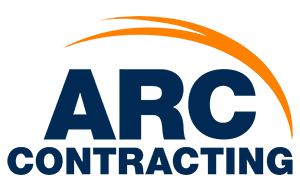3 Facts About Your Home’s Insulation: Lifespan, Materials and Sustainability
At this time of year, every homeowner is thinking about the insulation that will keep their house warm over the coming winter. When inspecting existing insulation or installing new, you should consider the material itself, its lifespan, the energy-saving opportunities and return on investment. Let’s go over three facts about home insulation to show the benefits of getting an inspection before the temperature drops.
Your insulation has a long lifespan
No matter the weather outside, insulation is working hard to make sure the internal temperature of your house doesn’t change. It keeps it cold in the summer and warm in the winter. Correctly installed insulation has an average lifespan of 20-30 years, so your dollar goes far with this investment.
Although insulation has a long lifespan, some issues can shorten its use and functionality, requiring removal and replacement:
Asbestos and mold growth in your insulation and walls
If you have an older home, it’s possible your insulation might contain asbestos, which is a major health risk. Though most modern insulations are mold repellent, some older materials can grow mold when wet. Look out for older cellulose insulation (made of paper) that has been known to encourage mold and asbestos growth and requires regular inspection.
Pest infestation in your attic insulation
Finding any pests in your walls or attic is a bad sign. You want to make sure your insulation contains a pest repellent before installation, so squirrels and bats will be less likely to settle under your roof.
Poor or faulty roof and insulation installation
Your insulation is only as healthy as your roof because it’s the main protector of the insulation. Make sure your roof has proper ventilation and all leaks are fixed to keep your insulation working effectively.
There are more than 10 insulation material options for your home
Yes, you read that right! The most popular materials of insulation used in Wisconsin are:
Fiberglass: Usually pink or yellow in color. Looks like shiny cotton candy.
Cellulose: Looks like chunks of dust or ground paper.
Spray Foam: Has a yellow tint to it. Is sprayed in and expands to cover every crack.
Insulation can be in rolls, batts and in spray form. To make an informed decision about your home’s insulation, you should meet with an insulation specialist. Schedule an insulation inspection to get all your questions answered so you can trust the product that’s protecting your home and everyone in it.
Insulation is a sustainable investment
In addition to insulation lasting a long time, most insulation materials are made from recycled products like glass, paper, plant cellulose and sheep wool. Insulation also helps to reduce a home’s energy consumption by an average of 15%. If you notice your energy bill growing year-to-year with regular consumption, consider getting your insulation inspected. To learn more about how insulation can be a sustainable investment, take a look at its environmental impact.
Inspect your home’s insulation annually
Even though insulation has a long life, it’s recommended you inspect your home’s insulated areas every year or at least every few years. You’ll have peace of mind that your insulation is keeping everyone comfortably heated, cooled and healthy.



